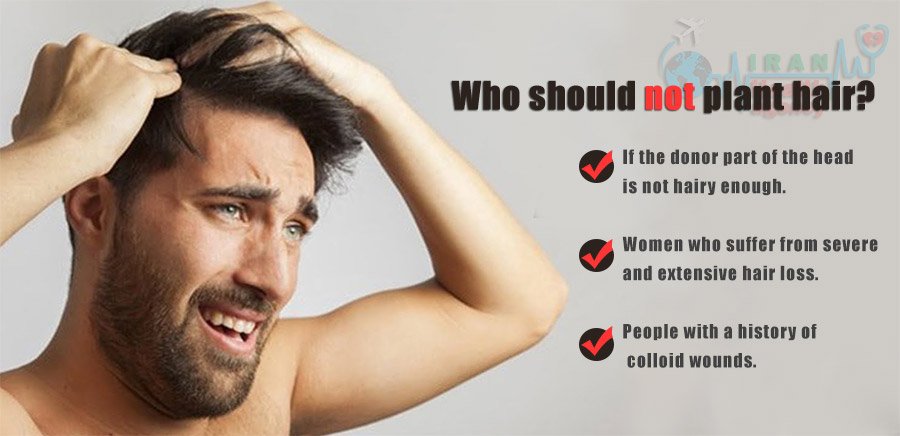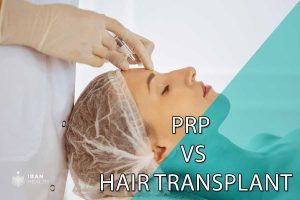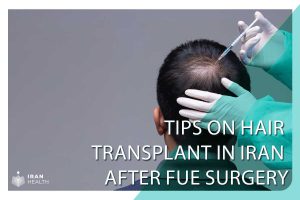Common Side Effects of Hair Transplant
It’s important to be aware that if you’re considering getting a hair transplant, there are some common side effects that you may experience. These can include swelling and discomfort in the scalp area, itching, and even infection. Additionally, you may notice that the transplanted hair falls out within the first few weeks after the procedure, which is normal. However, it’s worth noting that while these side effects are generally temporary and should subside within a few weeks, it’s always a good idea to speak with a qualified healthcare professional who can provide you with more information and guidance.
These complications vary in different patients. Some patients may experience no problems after hair and others experience one or more of the following complications.
This article is a subset of hair transplant in Iran.
Just so you know, getting a hair transplant might have some common side effects, Include:
- Inflation: One of the most common complications of hair transplantation that most patients experience after surgery is swelling after surgery, which is caused by the accumulation of fluid under the skin and the patient feels itching at the treated site. Actually there is no any definite claim for the reason of this side effect, but according to the research being conducted in 2014, less than 50 percent of patients face such difficulty post hair transplant.
- But After a short period of time, the swelling can be resolved by removing the interstitial fluid and, fortunately, it can be relieved by several stages of treatment and will not affect the person for a long time.
- Bleeding: According to the mentioned study, around 40 percent of beauty seekers had severe bleeding during surgery. Severe hemorrhages are not common during hair transplantation and often occur as a result of a surgeon’s mistake or inexperience. Some bleeding may occur during and after the surgery, especially in the donor area where the hair follicles are extracted. This can be controlled by applying pressure and dressing the wound. If the bleeding is excessive or persistent, you may need to contact your surgeon or seek medical attention.
- Shock loss: Hair transplant surgery can cause temporary hair loss, known as shock loss. This happens because the scalp experiences stress and trauma during the procedure. The hair loss usually affects both the transplanted hair and the surrounding hair. It may occur a few weeks or months after the surgery and last for a few months. However, most of the hair will eventually grow back once the follicles enter the growth phase again.
- Inflammation of the hair follicles: Hair follicle inflammation is Another common complication that patients deal with after hair transplantation, according to the study. It develops in the form of pimples or scars at the hair transplant site, causing the person to feel very uncomfortable and itchy. This negative side effects, damage the result of hair transplant and in some cases make it fail.
- Thinning hair: In many cases, hair transplants have a negative effect on the area where hair is removed (donor area). Thinning hair is a common occurrence in this area causing a lot of concern for patients because they want to recover their lost hair, and now another part of their hair is falling out. Most of the time, the hair does not become thinner forever, and after a short period of time, the hair begins to grow back naturally and permanently.
- Lichen planopilaris (LPP): It is a very acute form of follicular inflammation that causes severe inflammation of the hair follicles and the appearance of a large number of ulcers at the hair transplant site.in Year 2014 study which was published in the English journal which indicated that the condition may eventually lead to alopecia (hair loss in some part of head) and make hair loss worse and worse. But plananopilaris is one of the less common complications of hair transplantation. In the above studies, less than 10 patients had this condition as a result of hair transplantation, while none of them had a history of plananopilaris before surgery.
- Itching: At the time of hair transplantation, very tiny gaps are created in the scalp, causing hundreds or even thousands of hair follicles to be injured, which consequently patients feel itchiness in the area. However, patients should not scratch since it causes the wounds to fall down and the time required for wound healing be increased. Daily hair wash with special shampoos will be helpful with sooner healing. Itching is a common side effect of hair transplant, as the scalp heals and scabs form. You should resist the urge to scratch the scalp, as it may damage the grafts and cause infection. You can relieve the itching by applying a moisturizing lotion, spraying saline solution, or taking antihistamines as your surgeon prescribes.
- Numbness: Like any other surgeries, patients experience a type of anesthesia after hair transplant that will last for weeks. this side effect is located in the temporary and transient complications of hair transplantation. Over time, the body adjusts to the current situation, and the numbness disappears. Numbness or tingling sensation may be felt in the scalp after a hair transplant, especially in the donor area. This is usually temporary and will subside within a few weeks or months. However, in rare cases, it may be permanent or affect other parts of the face or body. You should consult your surgeon or a neurologist if you experience unusual or persistent numbness.
- Infection: As with any surgery, there is a risk of infection after a hair transplant. You may be prescribed antibiotics to prevent or treat infection. You should also follow the post-operative instructions given by your surgeon, such as keeping the scalp clean and dry, avoiding scratching or touching the wound, and avoiding swimming or exposing the scalp to direct sunlight.
- Swelling: Swelling is a normal inflammatory response after a hair transplant. It usually occurs in the forehead and around the eyes and may last a few days. You can reduce the swelling by applying ice packs, elevating your head, and taking anti-inflammatory medications as your surgeon prescribes.
- Hiccup: 6% of patients develop hiccups after hair transplantation, but hiccup is not a common complication of hair transplantation. The Hair Restoration Society has stated the cause of hiccups after hair transplantation is local stimulation of nerve terminals during surgery. By stimulating the neural network of the neck, the person falls into a hiccup. That is why, after surgery, a person has to take steroid medications to avoid having a hiccup.
- Cysts: These cysts often form at the site of hair transplantation, and when the large volume of hair is implanted, the cysts are more likely to develop. The cysts vary in size and are often purple in color. Fortunately, these cysts are benign and disappear after 1 to 2 weeks.
- Incision and Scars: Scarring is inevitable after a hair transplant, as the scalp is wounded and stitched. The extent and visibility of the scarring depend on the technique used, the surgeon’s skill, and the patient’s healing ability. Generally, the scarring is minimal and concealed by the surrounding hair. However, some patients may develop hypertrophic or keloid scars, which are raised, thick, and red. These can be treated by steroid injections, laser therapy, or surgery.
- Unnatural appearance: When people get hair transplants, they want their new hair to look as natural as possible. But sometimes, the new hair can look fake or weird. This can happen for different reasons, like the new hair is in the wrong place, not matching the color or texture of the rest, not being dense enough, or having a weird hairline. If this happens, there are ways to fix it, like doing another surgery or using other methods to restore hair, like medication, micro pigmentation (like getting a tattoo on your scalp), or wearing a hairpiece.

Who should not plant hair?
Hair transplantation is a relatively safe operation and its side effects are often temporary, but if one of the following applies to you, you shouldn’t consider hair transplantation;
I suggest you do not miss this article as it has very useful information for you!: Hair transplant without surgery
Recovery Timeline of Hair Transplant
The recovery timeline of a hair transplant varies from person to person, depending on the technique used, the number of grafts transplanted, the healing ability of the patient, and the post-operative care. However, here is a general overview of what you can expect after hair transplant:
- Day 1: You will leave the clinic with bandages on your scalp, and instructions on how to care for your wound. You may experience some pain, bleeding, swelling, and numbness, which can be managed by medication and ice packs. You should avoid any strenuous activity, alcohol, smoking, or infection-causing agents. You should sleep with your head elevated, and avoid lying on your grafts.
- Day 2-7: You will return to the clinic for a follow-up visit, where your bandages will be removed and your scalp will be examined. You will be advised on how to wash your hair gently, using a mild shampoo and lukewarm water. You should avoid physical exertion, sun exposure, or swimming. You may notice some scabs and crusts forming on your scalp, which will fall off naturally within a week or two. You may also notice some shock loss of hair, which is normal and temporary.
- Week 2-4: After your scalp surgery, you will start seeing signs of healing such as decreased swelling, redness, and numbness. You can continue your daily activities if they don’t put pressure or friction on your scalp. You can continue your normal hair care routine, including brushing, styling, or coloring. Be careful for six months and avoid chemical treatments like perms or relaxers. You may experience some hair loss, which is normal and it will stabilize soon.
- Month 1-3: After hair transplant surgery, you may experience a phase where the new hair falls out and the hair follicles become inactive. But don’t worry, this is a normal part of the process and doesn’t mean the surgery has failed. Just be patient and wait for the new hair to grow. Additionally, you may notice some improvement in the growth of your existing hair as the blood circulation and nutrition in your scalp improve.
- Month 4-6: During this phase, you will enter the growth phase, where the new hair will emerge from the follicles. The hair will be thin, fine, and light-colored at first, but will gradually thicken, darken, and lengthen over time. You will see visible improvement in your hair density and coverage. You may also notice changes in your hair texture or curl, which will normalize over time.
- Month 7-12: Your new hair will mature after your hair transplant. During this time, it will grow and blend in with the rest of your hair, giving you a na; this looking and permanent result. You may need further treatments, such as medication, PRP, or LLLT, to keep your hair looking its best. These treatments will help enhance or maintain your results over time.
Tips & Advice from Doctors for Hair Transplant
- If you’re considering a hair transplant surgery, it’s essential to know that different techniques are available. These techniques have additional benefits and drawbacks, such as the amount of scarring, recovery time, and cost. It’s best to talk to your doctor to figure out which the technique is the most suitable for you based on your needs and expectations.
- Before your surgery, your doctor will tell you what to do to get ready. This might include washing your hair, and wearing comfy clothes, and eating a light breakfast. They’ll also tell you to avoid smoking, drinking alcohol, and doing exercise. These steps can help you stay healthy and prevent problems during and after surgery.
- It’s essential to be patient during the healing process after your hair transplant surgery. You’ll need some time to recover and see the final results. In the first few weeks, you may experience some pain, swelling, scabbing, and shedding of the newly transplanted hair. Don’t worry; these are regular and temporary signs of healing. Just make sure to follow the instructions given by your doctor, such as applying ointment, washing your hair gently, taking painkillers, avoiding sun exposure, swimming, and any strenuous activities.
- Taking care of your health and nutrition is important for maintaining healthy hair. A balanced diet that includes protein, vitamins, minerals, and antioxidants is essential. Drinking plenty of water is also important, while caffeine, nicotine, and alcohol should be avoided. Your doctor may recommend supplements to help maintain your hair’s health. Use silicone-based products to protect your hair from damage. To style your hair, choose a skilled and experienced hairstylist who can cut and style your hair without harming your hair follicles. Keep in mind that hair transplant surgery can take several months or even a year to show full results, and that hair loss may occur before new hair growth is seen.
- It’s essential to keep your expectations realistic regarding hair transplant surgery. While it can improve your appearance and make you feel better about yourself, it won’t magically give you super thick, luscious locks. It can take a while to see the full results of the surgery – sometimes up to a year or more. And if you want to achieve your desired look, you might need to go in for more than one session. But don’t worry – just be patient and focus on how far you’ve come. Remember that your hair is unique and beautiful, and you should be proud of it.
If the donor part of the head is not hairy enough.
Women who suffer from severe and extensive hair loss.
People with a history of colloid wounds. Colloid sores are large sores that appear in the treated position after surgery.
If you are taking a drug that causes hair loss, for example the medicines prescribed in chemotherapy.
People whose hair is abnormal.
Getting a consultation in person:
Contact us now to book a free consultation with the best hair specialist in the area.
Contact information:
Resources:



